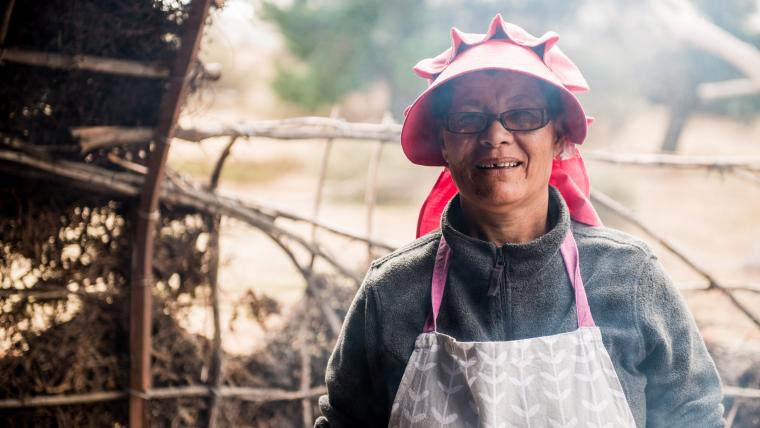
Breaking bread to save an ancient culture
Between towering mountains and the springtime spectacle of Namaqualand wildflowers lies a little-known and isolated Northern Cape village. Nama people lived here for centuries before missionaries settled in Leliefontein in the early 1800s. Today most of their culture has been left in the past. But Vera Engelbrecht, a local with a deep love for her roots, won’t let what is left of her heritage fade away. Through cooking, she is reviving indigenous traditions, instilling pride in others and putting a history-filled village back on the map.
In the past, visitors who travelled to Namaqualand for the flowers would barely spare a glance for Leliefontein. They were unaware of the place’s heritage until Engelbrecht began her kookskerm, or food hut, serving Nama food and exposing guests to traditional dancing and the experience of sleeping in reed huts. “I want to share my knowledge and culture so that we as South Africans can grow closer as a nation,” Engelbrecht says. The initiative also considers the environment that has sustained them for years. Supported by Conservation South Africa, Engelbrecht uses a climate diary and water tanks to ensure that not a drop of rain is wasted in the arid area. Wood from invasive trees and dead bush are used for the kookskerm and huts, making way for new growth to occur. Using what’s around her, Engelbrecht is preserving Nama culture and the environment.
Her impact extends to the community. Locals now have jobs and a reason to feel proud of who they are as they teach others their way of life. “The beauty of life is learning about those who live differently from you,” Engelbrecht says. In a seemingly ordinary village, there is indeed beauty to be found. The sun sets against the stark landscape. Flowers bloom in the desert. And against the effects of modernisation, an ancient culture comes alive again.






























Please sign in to leave a comment